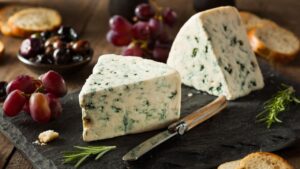Barnacles are a type of marine crustacean that attach themselves to rocks, piers, and other hard surfaces in tidal zones. They are often seen as a nuisance to boaters and swimmers, but some people wonder whether they can be eaten. In this article, we will explore the safety, nutritional value, culinary uses, and preparation methods of barnacles.
What Are Barnacles?

Barnacles are arthropods that belong to the subclass Cirripedia. They have a hard, calcareous shell that consists of several plates or valves, and they use feathery appendages called cirri to capture planktonic food. There are over 1,000 known species of barnacles, ranging from tiny parasitic forms that live on fish to large, sessile forms that can grow up to several inches long.
Barnacles are found in a variety of marine habitats, including intertidal zones, rocky shores, coral reefs, and deep-sea hydrothermal vents. They are filter feeders, meaning that they rely on water currents to bring them food, and they can live for several years or even decades.
Are Barnacles Safe to Eat?
The safety of eating barnacles is a topic of debate among experts. While some people consider them a delicacy and have been eating them for centuries, others caution against it due to the potential risks of contamination and toxicity.
Barnacles can accumulate heavy metals, pollutants, and harmful bacteria from the water they filter. In areas with high levels of pollution, they can be a significant source of toxins such as cadmium, lead, and mercury. Eating contaminated barnacles can cause illness or long-term health problems.
In addition, some species of barnacles produce toxins themselves as a defense mechanism. For example, the acorn barnacle (Semibalanus balanoides) can release a chemical called balanotoxin, which can cause skin irritation and respiratory distress in humans.
However, not all species of barnacles are toxic, and some experts believe that with proper preparation, they can be safe to eat. The key is to harvest them from clean waters and to cook them thoroughly to kill any bacteria or parasites.
Nutritional Value of Barnacles
Barnacles are a good source of protein, vitamins, and minerals. They contain all nine essential amino acids and are low in fat and carbohydrates. According to the USDA Nutrient Database, 100 grams of cooked barnacles provide:
- 110 calories
- 20 grams of protein
- 2 grams of fat
- 0 grams of carbohydrates
- 430 milligrams of calcium
- 1.5 milligrams of iron
- 5.5 micrograms of vitamin B12
Compared to other types of seafood, barnacles are relatively high in calcium and iron and low in calories and fat. However, they are not a significant source of omega-3 fatty acids, which are important for heart health.
Culinary Uses of Barnacles
Barnacles have been used as a food source by coastal communities for centuries. They are a traditional food in many cultures, including Japan, Chile, Spain, Portugal, and the Pacific Islands.
In Chile, barnacles are known as picorocos and are often served as a snack or appetizer. They are typically boiled or steamed and served with a spicy sauce made from olive oil, garlic, and red pepper flakes. In Japan, barnacles are called gooseneck barnacles or tsubugai and are often used in sushi or sashimi. They are prized for their delicate flavor and texture.
In addition to their culinary uses, barnacles have also been used in traditional medicine and as a natural dye. The Native Americans of the Pacific Northwest used barnacles to treat wounds and infections, while the Mapuche people of Chile used them to make a red dye for textiles.
Barnacles are not commonly found in Western cuisine, but they can be used as a substitute for other types of seafood in dishes such as paella or bouillabaisse. They have a subtle, briny flavor that pairs well with garlic, lemon, and other herbs and spices.
How to Prepare Barnacles for Eating
If you decide to try eating barnacles, it is important to know how to prepare them safely. Here are some tips for cleaning and cooking barnacles:
- Harvest barnacles from clean, unpolluted waters. Avoid areas with heavy boat traffic or industrial pollution.
- Rinse the barnacles in cold water to remove any debris or seaweed.
- Use a brush or knife to remove any barnacles that are still attached to the shell.
- Boil the barnacles in salted water for 5-10 minutes or steam them for 15-20 minutes. The shells should open when they are cooked.
- Remove the meat from the shell using a fork or small knife. The meat will be slightly chewy and may have a rubbery texture.
- Serve the barnacles with lemon wedges, garlic butter, or a spicy dipping sauce.
It is important to cook barnacles thoroughly to ensure that any bacteria or parasites are killed. Raw or undercooked barnacles can cause foodborne illness.
Where to Find Edible Barnacles
Edible barnacles can be found in rocky intertidal zones, especially in areas with strong tidal currents. They often grow in clusters on rocks or piers and can be harvested by hand or with a small knife. However, it is important to check local regulations and restrictions on harvesting barnacles, as some areas may have limits on the number or size of barnacles that can be collected.
If you are unsure about the safety or edibility of barnacles in your area, it is best to consult with local experts or avoid eating them altogether.
Alternative Ways to Enjoy Barnacles
If you are not interested in eating barnacles, there are other ways to enjoy their unique beauty and texture. Barnacles can be used in crafts and home decor, such as:
- Making a wreath or garland with dried barnacles
- Using barnacles as accents in a nautical-themed room
- Incorporating barnacles into a seashell mosaic or collage
- Gluing barnacles to a picture frame or mirror
Barnacles can also be used as an educational tool to teach children about marine life and ecology. They are fascinating creatures that play an important role in the ecosystem, and learning about them can inspire a deeper appreciation for the natural world.
Conclusion
In conclusion, the safety and edibility of barnacles is a topic of debate among experts. While some people consider them a delicacy and a good source of protein and nutrients, others caution against eating them due to the potential risks of contamination and toxicity. If you decide to try eating barnacles, it is important to harvest them from clean waters and to cook them thoroughly to ensure that they are safe to eat. Alternatively, you can enjoy their unique beauty and texture in crafts and home decor.





